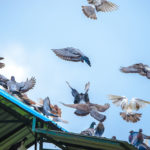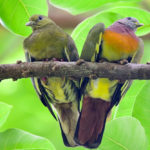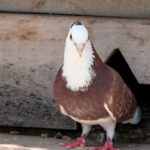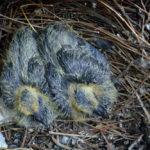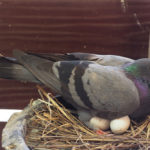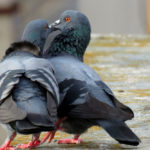Too often dismissed as pests, “rats with wings” or mere racing objects, the humble pigeon actually has a lot to offer, and their lives are fascinating.
There are a lot of differences between pigeons and other bird species, particularly with regards to mating and nesting habits, and plenty of incredible facts and quirks.
Though found more commonly in urban areas, pigeons also enjoy residing in rocky cliffs and remote farms; they can make themselves comfortable in a variety of locations.
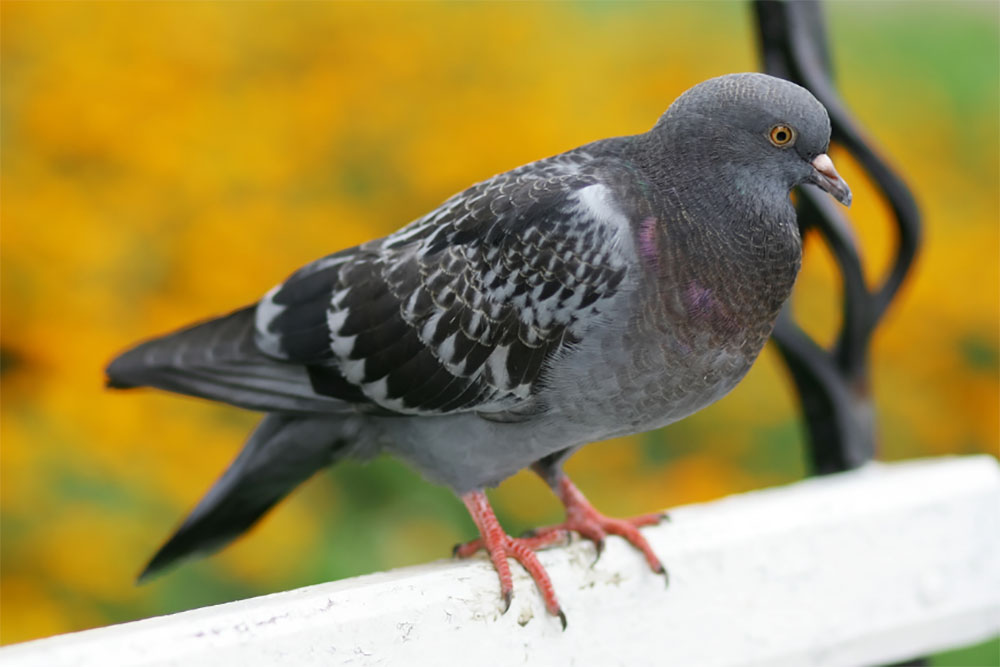
In fact, the main reason that there tends to be such a high concentration of pigeons in built-up, urban areas is because it offers them easy access to a continuous food supply – everyone enjoys feeding pigeons!
Quiet, mild-mannered, and sociable, pigeons are great pets, and enjoy a balance of interacting with their chosen human, and keeping to themselves – this makes them far more low-maintenance than other pets.
Whether you are a proud pigeon parent, interested in breeding, or are simply curious to learn more about these cute creatures, read on for everything you need to know about the life cycle of pigeons – from birth to death, and everything in between.
Where It All Begins: The Mating Habits Of Pigeons
Before a new pigeon can spring into existence, his parents need to mate. Unless a couple are unable to produce eggs, pigeons will typically mate for life.
Males will kick off the process by trying to get the attention of the female, using a range of methods including preening themselves and their proposed mate, regurgitating food for her, and strutting around to show off their prowess.
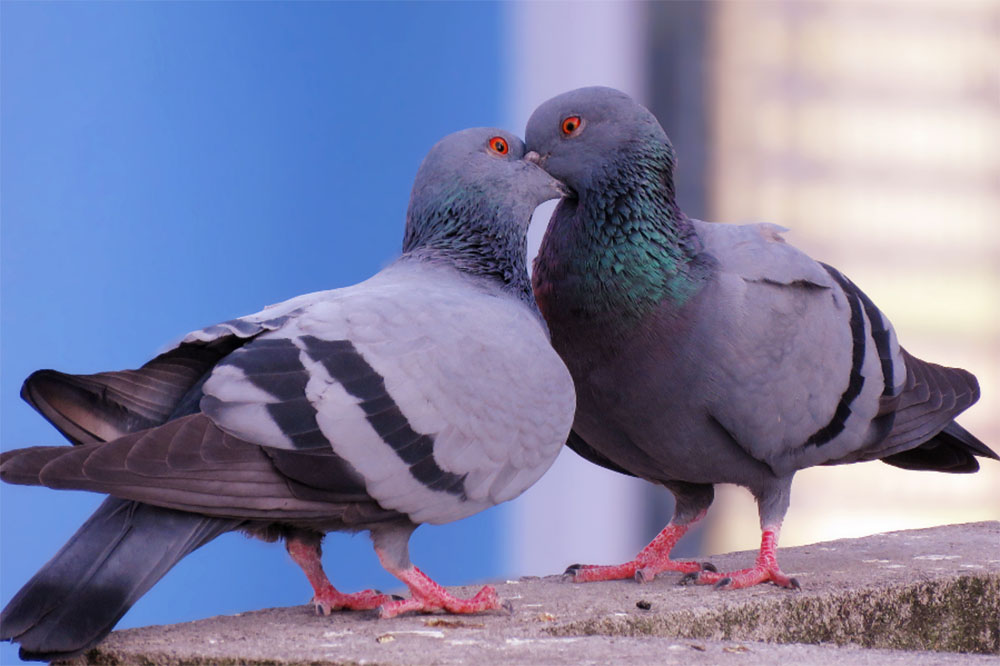
Once the female has indicated her interest, the pigeons pair off and prepare to reproduce – the male will jump on the female’s back to establish his interest in mating.
Pigeons will breed all year round – especially when they are kept as pets – but the majority of reproduction occurs in the fall, and in the spring.
Some couples may produce multiple broods in a single year and in some cases, will have two nests to incubate at a single time.
Home From Home
Once the couple has agreed to mate, work will begin on building a nest.
This is a key priority for pigeon couples once they have agreed to reproduce – just like any of us, they need a warm, safe place to incubate their eggs, protecting them from potential predators.
A nest will also protect the parent pigeons from any unwanted enemies while they wait for their babies to hatch.
The male will indicate that he is ready to nest by bringing his partner a single branch, and this is used to start the nest somewhere quiet, private, and cozy – usually on a flat rooftop, or under a window ledge.
These locations mean that pigeons nests do not tend to be as sturdy as those built-in trees, but they are very much a work in progress – accordion to some experts, pigeons do not remove the droppings from the nest, and this causes the surface to become thicker and firmer over time.
Once the location is chosen, the female will stay in the selected spot, and the male is responsible for bringing her nesting materials, including twigs, branches, and straw – this will be one piece at a time, and so is a long process.
Once the nest is complete, the female hunkers down and spends a few days settling in before she lays her eggs – all that building is hard work!
The Egg Days
Once a couple of days have passed, the female will lay her first egg, with the next one following around 44 hours later.
In most cases, this will be the full set, but some older females may lay up to three – this is quite rare.
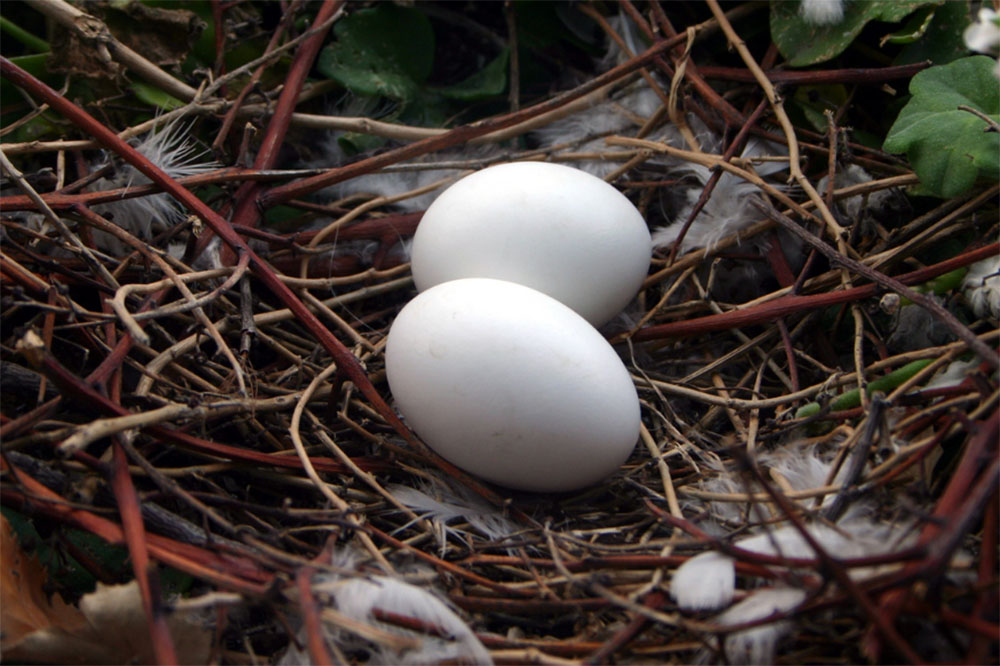
The appearance of the eggs will vary depending on where in the world the couple is – most tend to be small and white, but pigeons residing in colder or sunny climates may have a darker color to their eggs – this ensures that the hatchling inside is warm and cozy, while also offering UV protection.
Once the female has laid her eggs, the incubation period begins – this lasts for around 18 days, and following this, the eggs will hatch.
You can expect to wait for at least 14 days after laying for anything to happen.
Incubation is one of the most important parts of the process – by sitting on the eggs, the parents are keeping them warm and safe, and helping to ensure that their hatchlings grow properly, and survive through to their hatching.
Both parents will take turns incubating eggs, and, in one of those unique quirks exclusive to pigeons, will typically take set “shifts”.
The mother will typically sit on the eggs from late afternoon, stretching into overnight, and into the mid-morning hours of the following day.
At this point, the father will take a turn incubating the eggs, sitting on them from mid-morning up to the mid-afternoon.
During this time, the mother rests and heads out to search for food for both parents.
It is important to note that not all pigeon eggs are fertile, but that is unlikely to stop pigeons from trying to hatch them.
Parents have a reputation for being quite possessive, and will often attempt to hatch an egg, even when there is no viable chance of its hatching.
With your pet pigeons, you can carefully check whether the eggs produced by your pigeon are fertile – providing that your pet allows this.
If your pet is agreeable, you can remove any non-fertile eggs to save your pigeon the effort of trying to hatch them without success.
To check the viability of the eggs, wait until they have been incubated for a couple of days, and then shine a bright light on the larger end of each of the eggs.
If the egg is fertile and viable, there will be a dark spot in the center, and you will see reddish-colored veins extending from this spot. In non-fertile eggs, you will see nothing but a yellow yolk.
If your pigeon allows, this can be removed.
Continue to check this process a number of times while the eggs are being incubated, to check that all the embryos are developing as they should.
On occasion, you may notice that an embryo has died – if this is the case, remove the egg from the nest.
How To Ensure Healthy Eggs
It goes without saying that you will want as many of your eggs as possible to be healthy and that they hatch successfully.
The easiest and more effective way to ensure this is to focus on the mother – you need to ensure that her diet is healthy, nutritious, and well rounded – this will increase the chances of successful hatching.
Seeds and grains should form a key part of your pigeon’s diet, and you should ensure that there are plenty of them available.
Vitamins and minerals are also crucial, and you need to ensure that your pet is receiving these in the appropriate amounts, as well as plenty of protein – sources such as snails are particularly effective.
Fresh fruits and vegetables can also be included, but you will need to ensure that you cut the pieces up into tiny pieces, as there is a risk of choking.
Specialist seed mixtures or pigeon pellets can also be suitable, and these are useful, as they contain the vitamins and minerals in the best quantities for your pigeon to thrive.#
As a note, it is important never to offer your pigeon avocado – it may be your favorite snack, but it is extremely toxic to pigeons.
It is a good idea to have a chat with your veterinarian – they will offer the best advice to keep your bird healthy, and increase your chances of successful egg hatching.
Hatching And The Post Birth Period
Once the day of hatching arrives, the mother will remain in the nest, not leaving to sleep or eat until the babies are hatched – this can occur at any time of day.
If you are breeding pigeons and they have not hatched within eighteen days, it is a good idea to contact your vet – they will be able to advise you on any possible issues and offer you the best next steps for your brood.
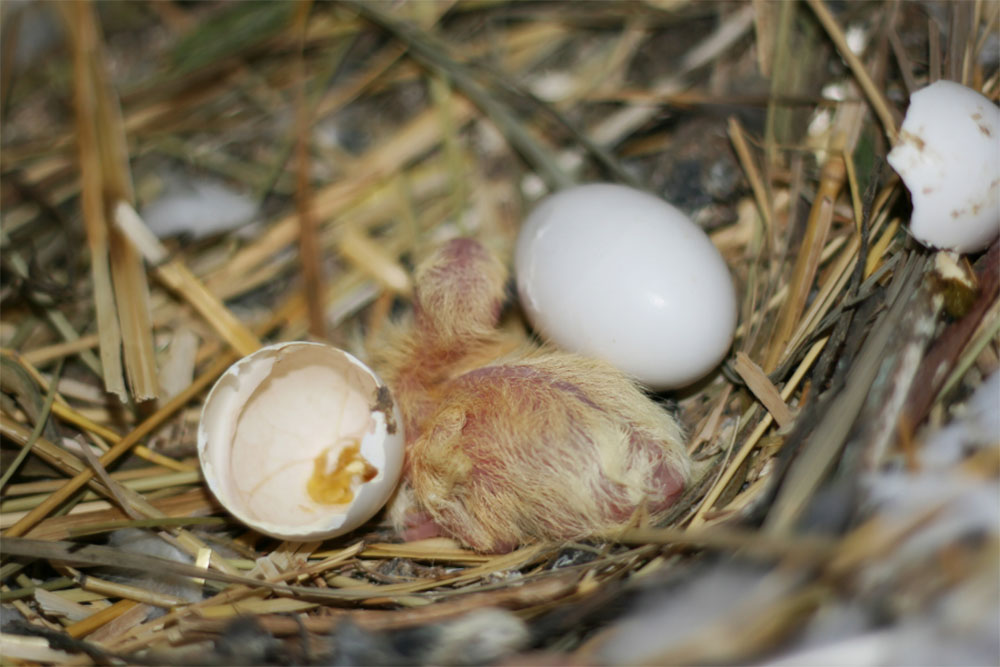
The post-birth period offers another area where pigeons differ from other birds.
While most birds will flee the nest as soon as possible, usually within two weeks, baby pigeons will stay in the nest with their parents for a minimum of one month – this is the reason you rarely see a baby pigeon.
For babies born in the winter, this period can be extended even further – in some cases, up to 45 days – and this is likely due to the cold weather restricting growth.
As a result, it takes a little while longer for the baby pigeons to become strong enough to survive outside the safety of the nest.
The newborns are covered in a white or yellow sparse down and are totally reliant on their parents – primarily their mother – for food as they start to grow and develop.
Over the next few weeks, their feathers will grow and develop, changing and evolving to match the distinctive, recognizable grey shade seen in full-grown pigeons.
This color may continue to develop over the weeks or months following the baby’s departure from the nest.
Food is another important element of the post-birth period, and this will be taken care of by the parents.
Rather than worms, seeds, or other traditional bird foods, baby pigeons are fed crop milk from their parents – this is a delicious combination of partially digested food, which the adults regurgitate from their crop, straight into those of their babies.
If you are raising pigeons, this should all be taken care of by the parents, but you will need to keep a close eye and ensure that everything is running as it should.
If you notice that the babies seem underfed, or that they are not getting the nutrients they need, you can obtain a specialist formula from your vet, who will also give you the directions for feeding.
You can use a plastic syringe or a small baby bottle to ensure that your babies are nourished, healthy, and receiving adequate nutrition.
Alternatively, you can try puppy biscuits soaked in plenty of water.
If you choose this opinion, remember to thicken the mixture every day to meet the needs of growing, hungry baby pigeons – they will need to increase their intake of vitamins and minerals.
If you need to step in to feed the babies, remember to avoid dairy at all costs – this can make pigeons very sick – and to make sure that the birds are warm when they eat.
This latter point is crucial, as pigeons are unable to digest their food properly if they are not warm enough.
Wrap them up well before hand-feeding, and make sure that their core body temperature is warm enough before you feed them – the consequences can be fatal if this step is not followed correctly.
Following the post-birth, or “brooding” period, both mother and father will work together to care for the babies. Both are able to produce crop milk, allowing both to feed the young.
This ensures that both parents stay healthy, strong, and able to fight off predators – this, along with hiding, are the natural instincts of pigeons.
Leaving The Nest
In the wild, baby pigeons will have an instinctive understanding of the best time to leave the nest, and their parents will help them along the way.
When raising your own pet pigeons, however, it can be tricky to know quite when your hatchlings are ready to flee the nest.
As we mentioned, baby pigeons look very similar to adults when they are ready to go – when you notice that the babies are a similar size to their parents, then this is a good indication that they are ready to move on.
As a rule, this is when they are between 5 and 15 inches in length, and between 1 and 5 pounds in weight, though babies tend to be a little smaller.
You will also likely notice that the babies seem easier to try and fly on their own, and this is a sign that they are ready to go.
If you have any doubts, or the parents seem to be pushing a baby who is not ready, get in touch with a veterinarian.
Reaching Independence And Maturity
Around 4 to 6 weeks after hatching, the majority of pigeon babies will reach full maturity, and leave the nest.
The parents will immediately begin a new brood at this point – they mate for life, and so will be keen to lay, hatch, and raise another batch.
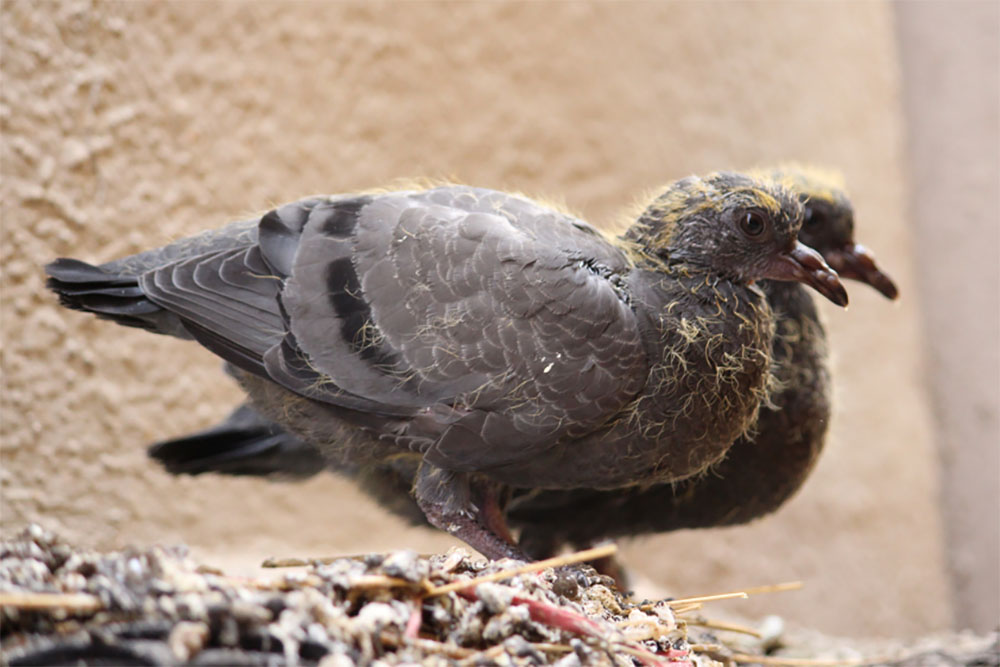
Around seven months after hatching, pigeons will reach sexual maturity, but most female pigeons will not be ready to mate or lay eggs of their own until around one year of age.
In the rare situations where pigeons lay sooner, there is likely to only be one egg per brood – for this reason, you should allow your pigeons to reach a year old before you start breeding them.
Caring For Pet Pigeons Versus Wild Pigeons
There are a few things to note if you are breeding and raising your own pigeons, versus interacting with and observing wild pigeons.
In some ways, your own pet pigeons are luckier, as you are on hand to assist with hatching and caring for the birds – an advantage that is not available to pigeons in the wild.
According to experts, you are ok to touch pigeon eggs, providing that it is ok with the parents.
You should watch the adult birds closely to see if they show any signs of distress – if this seems to be the case, see if there is an obvious reason for their upset, or get in touch with your veterinarian, who will be in the best position to offer you advice.
Ultimately, if the parent does not seem to want you close by, take this as your cue to step back and keep your distance.
Step in if you feel that you are urgently needed, but otherwise, you must be prepared to let nature take its course.
The situation is different with wild pigeons of course – here, you should stay away from any nests or babies that you see; your presence may scare the parents away, making them too scared to return to the nest as a result of your visit.
This can lead to the death of the babies – they are unable to source their own food, and so are likely to starve.
Keeping Your Pigeons Healthy
Part of ensuring that you raise healthy baby birds involves ensuring that your pigeon stays well and healthy.
This includes ensuring that they have access to a steady supply of fresh, clean water, and a healthy, balanced diet.
Their environment is also important – make sure that your birds are housed in a bright, sunny aviary, allowing them to access Vitamin D, warmth, and benefits to their health.
Keep an eye on the grit you use – not all sizes are suitable for all birds, so you may need to experiment until you find the right match for your pigeons.
Where possible, provide your pigeons with a rain bath – this reduces the risk that they will consume contaminated water.
Another important consideration is pH level – this can have an impact on the health of your pigeons and, in turn, the health of any eggs produced.
All healthy pigeons will have acidic droppings, and even the healthiest birds can carry diseases.
In the wild, this is not an issue, but when you are raising and breeding the birds, you need to ensure that you are cleaning and removing droppings properly.
Remember that when your pigeons are building nests, they will leave the droppings in place, and it is best not to interfere here.
Keeping water clean and sanitary is also important for reducing the risk of disease in your birds, so make sure that fountains are cleaned daily, and that water is kept cool and fresh to reduce the risk of bacteria.
Learning how to keep your pigeons healthy and well will not only increase the lifespan of your bird, but it will also increase the chances of successful hatching when you come to breed future broods.
How Long Will My Pigeon Live?
Once your baby pigeons fly the nest, they will follow the same path as their parents before them – all while their parents are busy mating and raising another brood.
Once your babies are around 7 to 12 months old, they will begin to show an interest in mating.
At this time, they will find their own life mate, and, if they are compatible, the pair will begin to lay eggs and raise broods of their very own.
The majority of pigeons will live for between three and six years, but there are always exceptions – some have been known to live for a decade, and there are reports of pigeons living for an impressive 15 years, though this is less common.
Pet pigeons are more likely to enjoy these lengthy lifespans; they have access to the best nutrition and a high-quality diet, do not need to worry about protecting themselves from predators, and will have access to veterinary care and treatment as and when required.
All of these factors can play a large role in boosting their lifespan.
Final Thoughts
Pigeons can sometimes get an unfair rep – they are often dismissed as pests, and not given the time, energy, and attention that they deserve.
Despite the negative attitudes, pigeons are super smart creatures, who were trusted to carry messages across enemy lines in World War One, and who have the ability to navigate back to their nest from as far as 1300 miles away.
According to some experts, they may even be able to detect cancer, though studies on this are still ongoing.
As well as possessing a range of skills, pigeons are also great companions.
They can also understand and comprehend space and time – just like humans – and this makes them excellent pets, whether you want to just hang out with them, or take advantage of their ability for speed – the fastest pigeon on record reached amazing speeds of 98 miles per hour.

